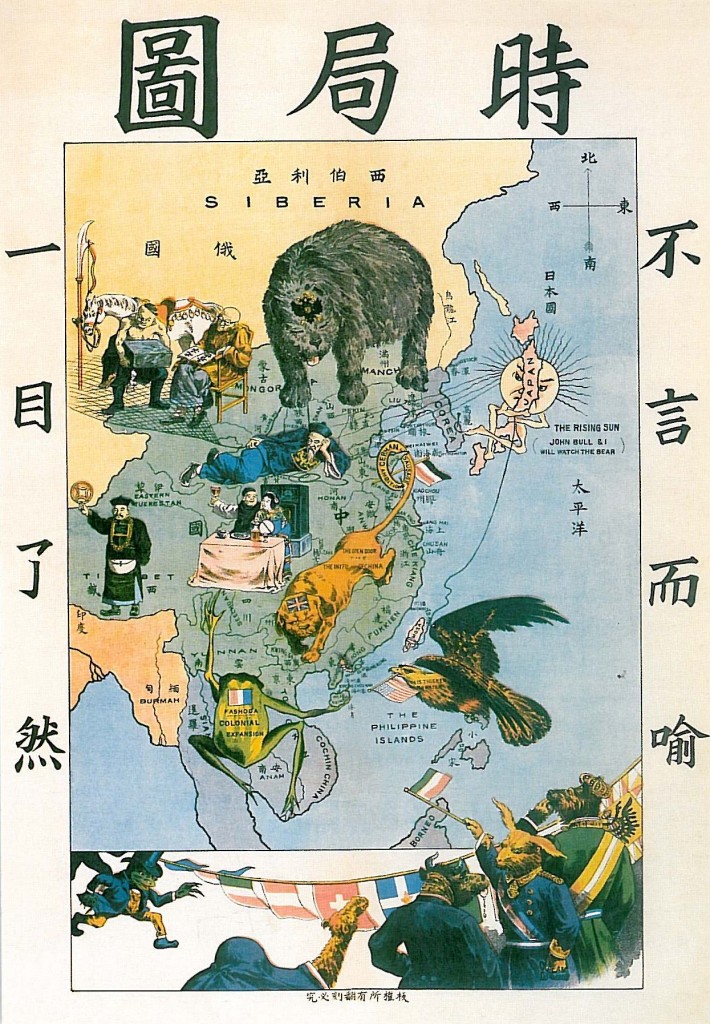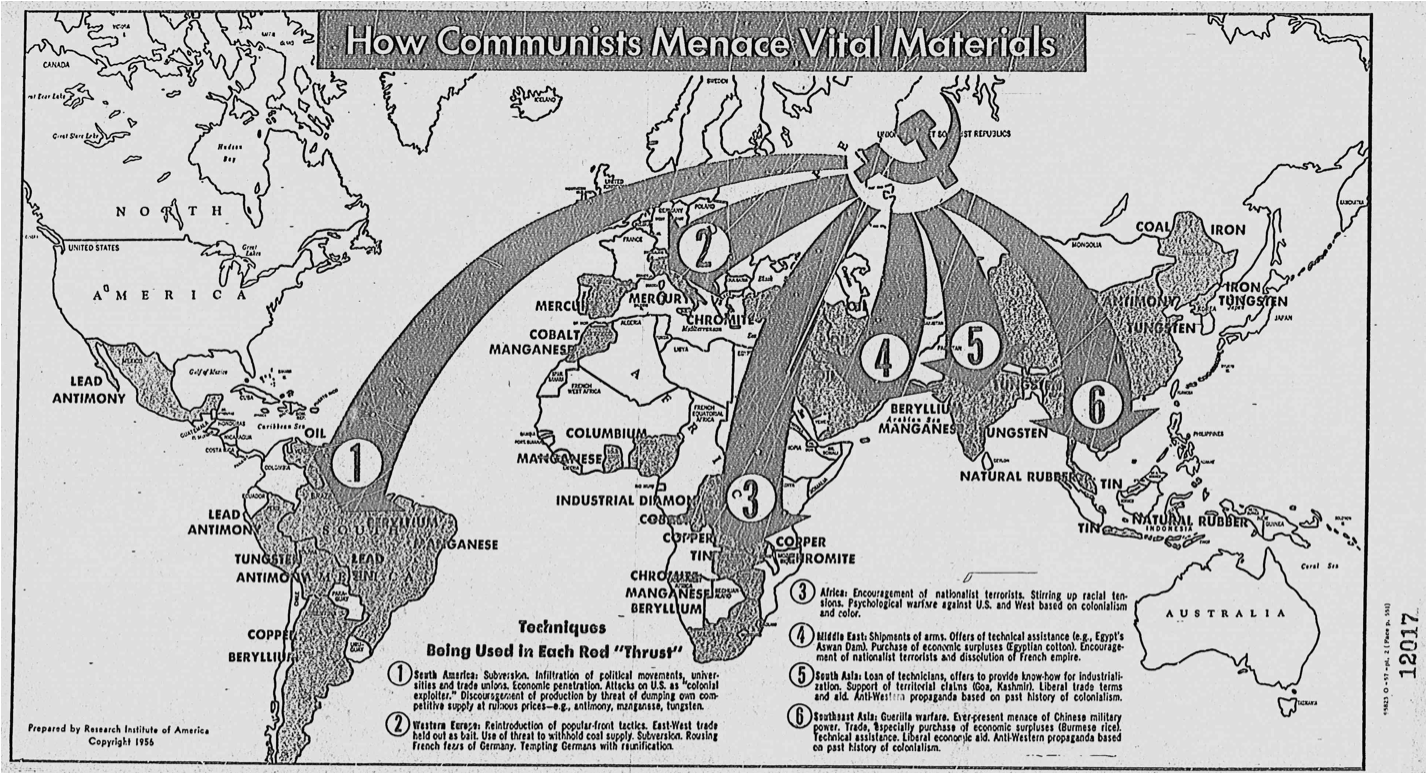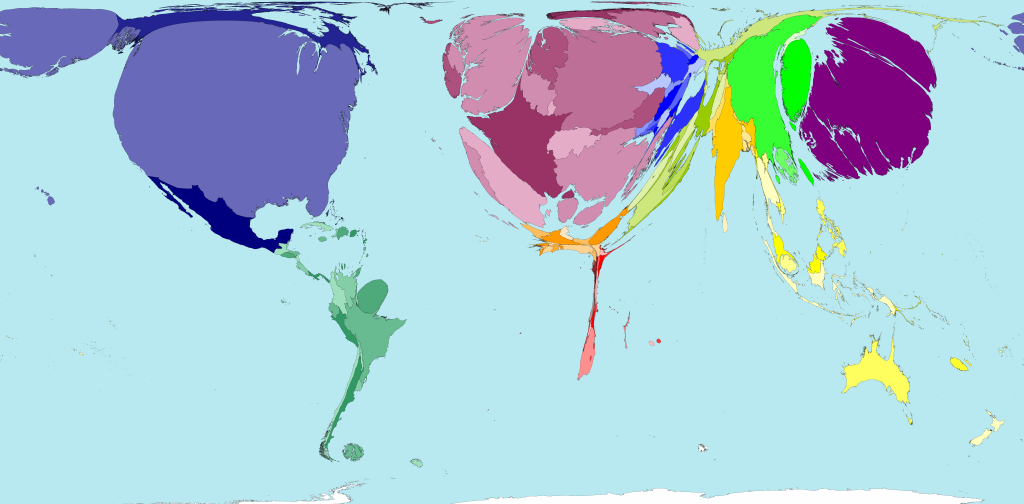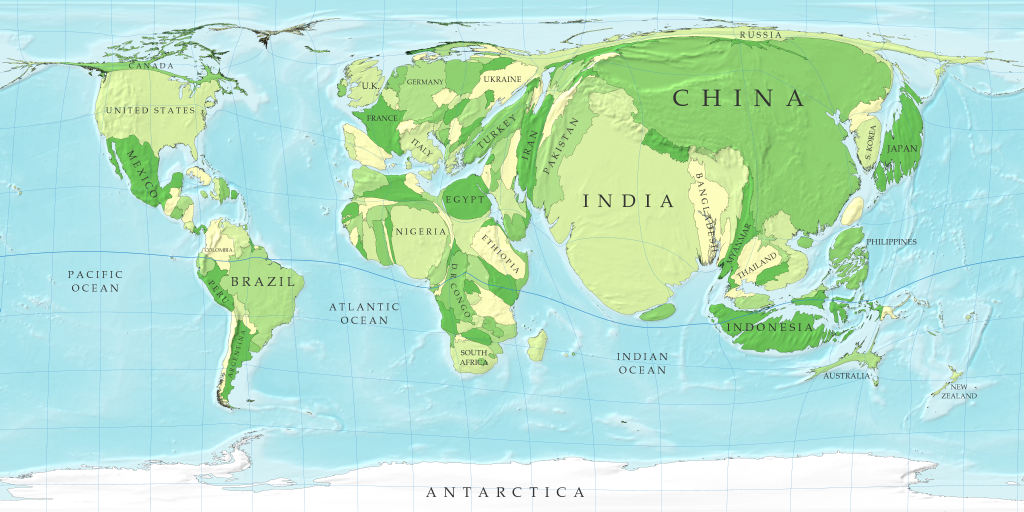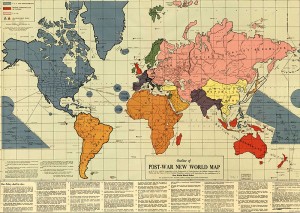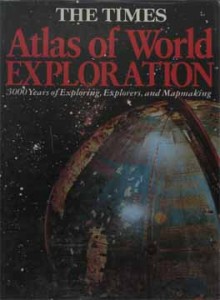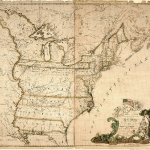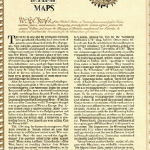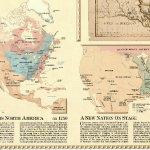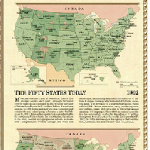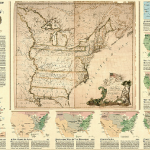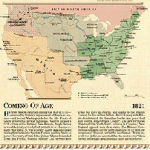Maps are like photos of the world. In my photo albums, there are pictures of me as a crying baby, a basketball player in the team or a party girl running crazy with friends. Whenever I open those albums, I always feel like traveling back to the old days and meeting the different “me”. So are the maps. They are actually pictures of the world captured in different times, from different perspectives and with different focus. Imagine China as a young adult, we now have the chance to glance at the figure of this adult from the “photo” taken 100 years ago when he was weak and small. We could analyze what the picture speaks about him, what he looked like and how he grew from weak to strong.
“Western power dividing China up like a melon”
“The Situation in the Far East” is a map made by a Chinese Scholar Tse Tsan-Tai. He depicts the desperate situation that China faced in the end of nineteenth century in a symbolic form. The eagle represents United States approaching from the Philippines; the bear represents Russia invading China from the north; the frog represents France coveting China in the Southeast Asia; the sun, the bulldog and its tail represent Japan, England and Germany placing their power on China in different areas. China at that time was so vulnerable just like a melon in front of monsters’ mouth. After bourgeois revolution, western countries enjoyed a rapid growth in economics and technology and started expanding their power oversea; while at the same time, holding the superiority view that it was the one chosen by God, China’s corrupted government of Manchu adopted the “Close-Door Policy” and immersed itself in secluded peace. However, all the sudden China’s secluded peace was shattered by the defeat of First Anglo-Chinese War (1839-1842). Since China signed the first unequal treaties, western countries gradually open the door of this mysterious country and for the first time, China was forced to notice the fierce power outside of China. Indeed, this map captured this subtle feeling Chinese people had at this particular moment, haughty but scared of the Westerns. Tse Tsan-Tai depicted this tangled emotion by choosing animals as the representation of Western countries, portraying them as less developed than human but more violent and brutal.
“Asleep and Waking Up”
Tse Tsan-Tai not only presented the imminent danger China faced from the coast, but also put forward his argument tactfully of the inherent causes that leads to China’s weakness and vulnerability. The lying man in the center represents the government officials totally ignoring the nation’s crisis; under the net held by his right hand, two people represent the Chinese youth obsessed with pursuit of official or military career and ended up just like the incompetent officials; the other two men represent Chinese indulging in wine, women and money. This map poses sharp sarcasm on Manchu government. However, we are still missing something. We see all the covetous monster and depraved government officers, but where is the hero? Where is the side of justice? Tsan-Tai intended to put the hero in silence in order to call Chinese people’s attention. First, he imposed a pride but scared feeling of the endangered Country on Chinese people; then, he abandoned people’s hope on government; now he cut off their last means of retreat by creating this despairing sense of missing hero and arouse the patriotic feeling that the reader is the one in charge of the Country. ”There is NO hero. Wake up Chinese people! It is the time for you to act!” This reflected the truth of the situation: each class made some attempt to rescue China from the crisis but not yet find the right way. The Bourgeois class undertook Hundred Days’ Reform during 1898, and the Xinhai Revolution in 1911; the landlord class initiated Self-Strengthening Movement during 1861 to 1895; the peasantry class initiated Boxer Rebellion between 1899 and 1901. All classes acted yet failed. China in the end of 19th century desperately needed a hero to stand out and unite the people of all classes together to fight against the westerns powers and the Manchu Government. China needed to wake up.
“Bear in mind of the past and create a bright future”
This map is so significant for all Chinese people that it has shaped their national identity. This map is printed on all 8th and 11th grade history textbook as a testimony of China’s small and weak past and a reminder for students. Personally, I still remember writing answers such as “bear in mind of the past and create a bright future” for questions like “what did you learned from this map?” on plenty of tests in school. Those words still naturally ring in all Chinese people’s mind when they think about the past. In general, Chinese take this map as part of their complex national identity: they were the weak and vulnerable nation suffered under corrupted government, both haughty and scared of the western powers. But, the “sleeping” giant now has awakened. Tse Tsan-Tai would probably be grateful if he sees the nation today because his initial purpose has been realized. Not only had China solved the national crisis, but also has become a prosperous and respectful country.
-Jennifer He

